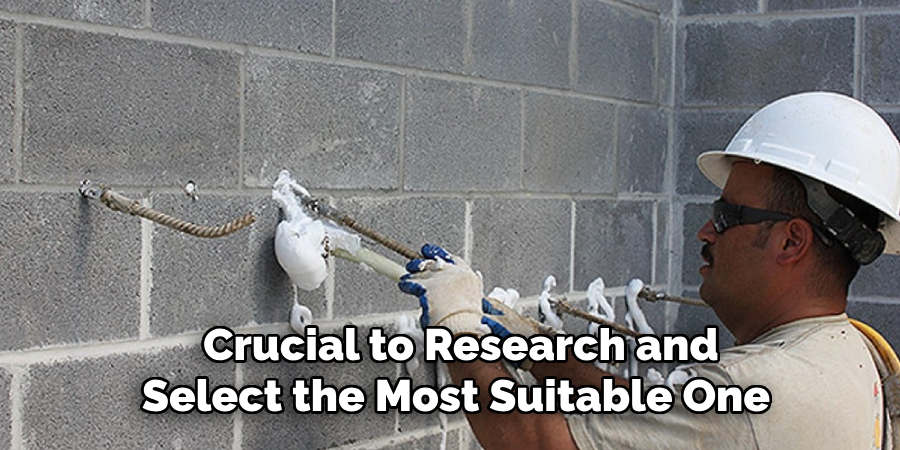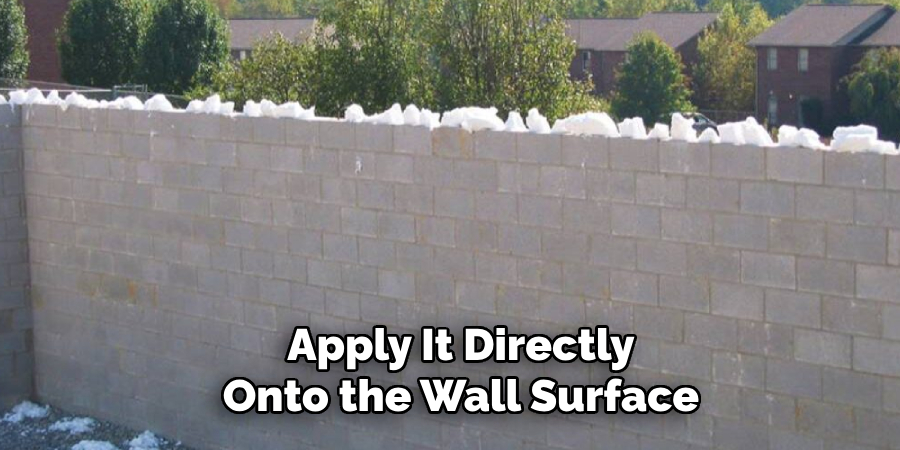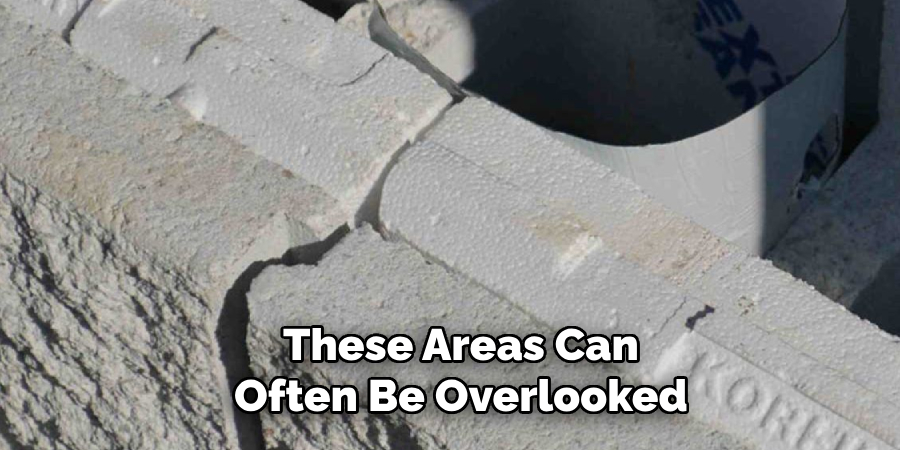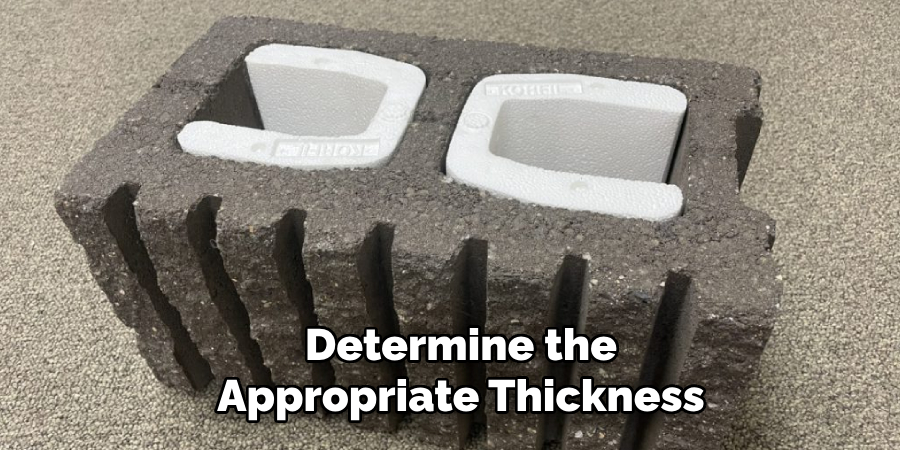Insulating CMU (concrete masonry unit) walls is a critical step in enhancing the energy efficiency and comfort of a building. These walls, commonly used in both residential and commercial construction, are known for their durability and strength.
However, due to their porous nature, they can allow significant heat transfer, leading to increased energy consumption and higher utility bills. Proper insulation helps to minimize this heat exchange, providing better thermal control, reducing reliance on heating and cooling systems, and improving the overall environmental impact of the structure.

Whether renovating an existing building or designing a new one, understanding how to properly insulate CMU walls can lead to substantial energy savings and increased occupant comfort. Thanks for reading this article on how to insulate cmu walls.
Why Insulate CMU Walls?
Proper insulation of CMU walls is essential for several reasons, including:
Energy Efficiency:
As mentioned earlier, insulated walls can significantly reduce heat exchange, leading to lower energy consumption. This translates into reduced utility bills and a more sustainable building.
Comfort:
Insulation helps to maintain a consistent indoor temperature, reducing the need for frequent adjustments to heating and cooling systems. This creates a more comfortable living or working environment for occupants.
Soundproofing:
Insulating CMU walls also help to reduce sound transmission, making it ideal for buildings in noisy environments or those seeking increased privacy.
Moisture Control:
Insulation acts as a barrier against moisture, preventing water from seeping through the walls. This can help prevent mold growth and damage to the building’s structure.
Needed Materials
Before starting the insulation process, it is essential to gather the necessary materials. These include:
Insulation Material:
There are several options for insulation material, including spray foam, rigid foam boards, and batts or blankets. Each type has its advantages and disadvantages, so it is crucial to research and select the most suitable one for your project.
Adhesive:

To secure the insulation material to the walls, an adhesive such as construction glue or masonry adhesive is needed.
Tape:
Tape can be used to seal any gaps between insulation panels.
Protective Gear:
Working with insulation materials can be hazardous to the skin and lungs. It is essential to wear protective gear such as gloves, goggles, and a mask during installation.
7 Step-by-step Guidelines on How to Insulate Cmu Walls
Step 1: Prepare the Walls
Before beginning the insulation process, it is crucial to prepare the CMU walls to ensure optimal adhesion and effectiveness of the insulation. Start by thoroughly cleaning the wall surface to remove any dirt, dust, or debris. This can be achieved using a vacuum or a damp cloth, followed by allowing the walls to dry completely.
Next, inspect the walls for any cracks, holes, or imperfections and use masonry repair products to fill and smooth these areas. Ensuring the wall surface is clean and even before applying insulation will help the adhesive bond better and enhance the insulation’s overall performance.
Step 2: Measure and Cut Insulation Material
Once the walls are prepared, the next step involves accurately measuring and cutting the insulation material. Begin by using a tape measure to determine the dimensions of each section of the wall that requires insulation. It’s important to be precise with these measurements to ensure that the insulation will fit snugly without leaving gaps for heat or moisture transfer. After measuring, use a straightedge or a ruler to mark the insulation material accordingly.
A utility knife or a saw designed to cut foam or other insulation materials is recommended for cutting the insulation. Make sure to cut slightly smaller than the marked lines if necessary, to account for any imperfections or variations in the wall surface. Taking the time to measure and cut the insulation material carefully will enhance the efficiency of the installation and improve the overall insulation effectiveness.
Step 3: Apply Adhesive
Once the insulation pieces are cut, it’s time to apply the adhesive. Start by applying a generous amount of construction glue or masonry adhesive on the back of the insulation material. Then, using a trowel or putty knife, spread the adhesive evenly over the entire surface, making sure to cover all corners and edges. This will help ensure that there are no gaps between the insulation and the wall surface.

But if using spray foam insulation, apply it directly onto the wall surface in a zigzag pattern to create an even layer.
Step 4: Attach Insulation Material to Walls
With the adhesive applied, press the insulation material firmly against the wall and hold it in place for a few seconds. If using rigid foam boards or batts/blankets, make sure to align them correctly with each other, creating a seamless layer of insulation. Use a level or straightedge to ensure that the insulation is level and plumb before securing it further with mechanical fasteners such as nails or screws.
It is vital to follow the manufacturer’s instructions when using mechanical fasteners, as over-penetration can damage the insulation and reduce its effectiveness.
Step 5: Seal Gaps between Panels
After attaching the insulation material to the CMU walls, it’s crucial to seal any gaps or seams between the panels to ensure maximum energy efficiency and prevent moisture intrusion. Begin by inspecting the insulation joints where panels meet. Use a high-quality weatherproof tape or sealing compound to bridge any gaps. For smaller gaps and seams, tape can be applied directly over the joints, pressing firmly to create a tight seal.
In cases of more substantial gaps, a foam sealant or caulk specifically designed for insulation projects may be needed. Apply the sealant according to the manufacturer’s instructions, filling the gaps completely. Make sure the sealant is compatible with the insulation material to prevent degradation over time. Sealing the gaps not only improves the thermal efficiency of the wall system but also acts as an effective barrier against air leaks and moisture, further enhancing the overall performance of the insulated CMU walls.
Step 6: Verify Insulation Coverage
After completing the installation, it is essential to check that all areas of the CMU walls are adequately insulated. Pay particular attention to corners, edges, and irregular surfaces, ensuring that no gaps or voids exist in these areas.

These areas can often be overlooked but are crucial for maintaining consistent insulation coverage and preventing thermal bridging. Use additional insulation material or sealant as needed to fill any gaps or cover any missed sections.
Step 7: Install Finishing Materials
Once the insulation is fully installed and sealed, finishing materials such as drywall or paneling can be attached directly over the insulated CMU walls. This will provide a clean, finished appearance while also providing a barrier against moisture and air infiltration. Follow the appropriate installation instructions for the chosen finishing materials and make sure to use proper fasteners to secure them over the insulation.
Following these step-by-step guidelines on how to insulate cmu walls will help you properly insulate CMU walls and improve the overall energy efficiency of your building.
Remember to always prioritize safety by wearing protective gear and carefully following all manufacturer’s instructions for both insulation and adhesive products. With proper insulation, you can enjoy a comfortable indoor environment while also reducing your energy costs. So, it is essential to choose an experienced contractor who specializes in CMU wall insulation for the best results.
Frequently Asked Questions
Q: Can I Use Any Type of Insulation Material for Cmu Walls?
A: Insulation materials specifically designed for CMU walls, such as rigid foam boards or batts/blankets, are recommended. However, certain spray foam insulation products can also be suitable for CMU walls. Consult with a professional contractor to determine the best type of insulation for your specific building and location.
Q: How Thick Should the Insulation Be on Cmu Walls?
A: The thickness of insulation required for CMU walls will depend on various factors, such as climate, building design, and local building codes. In general, thicker insulation will provide better thermal performance, but it is essential to consult with a professional to determine the appropriate thickness for your specific needs.
Q: Can I Install Insulation Over Existing Cmu Walls?

A: Yes, it is possible to install insulation over existing CMU walls. However, it is crucial to properly prepare the surface by cleaning and repairing any damaged areas before installing insulation. Consult with a professional contractor for the best approach to insulate existing CMU walls.
Q: How Does Insulating Cmu Walls Benefit Me?
A: Insulating CMU walls provides numerous benefits, including improved energy efficiency, reduced heating and cooling costs, improved indoor comfort, and increased sound insulation. It can also help prevent moisture intrusion and increase the overall durability of your building’s walls.
Conclusion
In conclusion, insulating CMU walls can significantly enhance a building’s energy efficiency and interior comfort, resulting in long-term cost savings. By carefully following each step on how to insulate cmu walls, from preparing the walls to installing finishing materials, you can ensure a thorough and effective insulation process.
Proper insulation not only minimizes heat loss but also prevents air leaks and moisture damage, creating a more sustainable building environment. Always consider consulting with a professional contractor to leverage their expertise and ensure the best outcomes for your insulation project. Your commitment to detailed execution will ultimately lead to a more comfortable, efficient, and environmentally friendly building.
